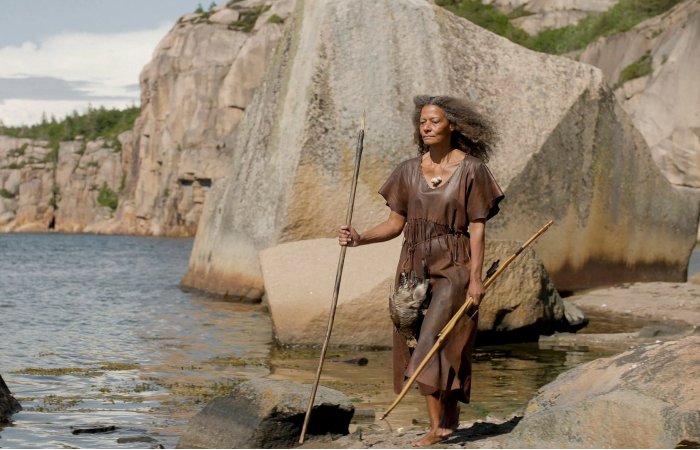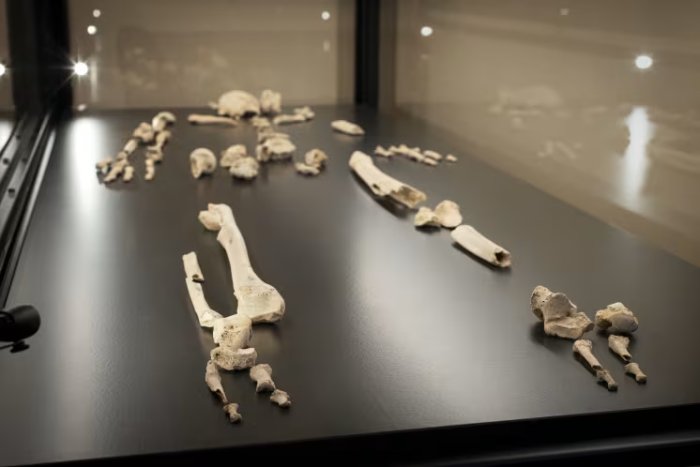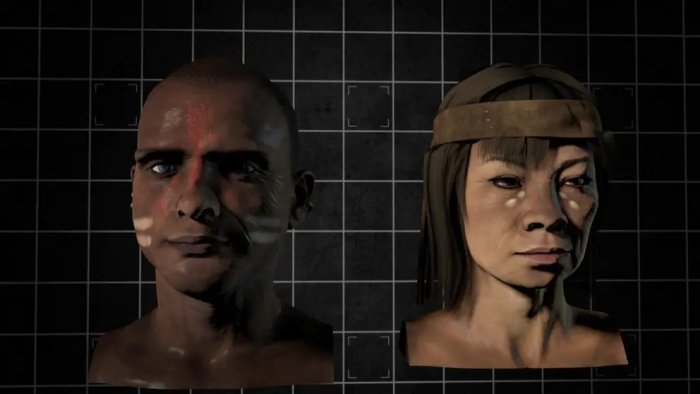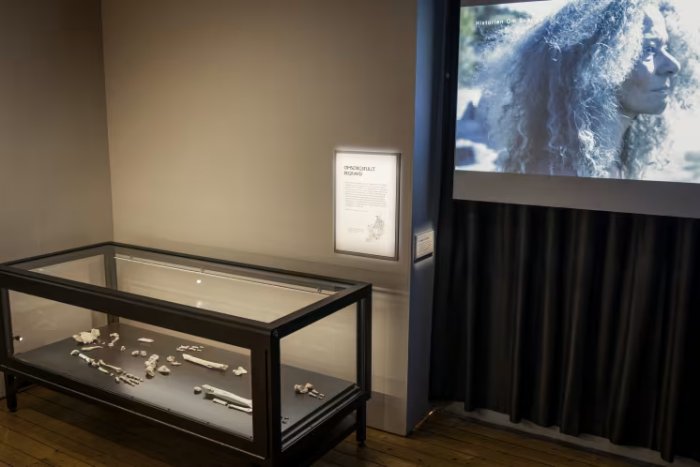Ellen Lloyd – AncientPages.com – The Österödskvinnan (Österöd woman) lived 10,000 years ago in Sweden. Her skeleton, the oldest ever found in Sweden, is now, for the first and last time, on display at the Gothenburg City Museum, Sweden.
“This is a unique archaeological find that has great significance for our interpretation of ancient times. The Österöd woman gives us an exciting glimpse of our prehistory and allows the audience to get really close to an individual who lived and died 10,000 years ago,” says Else-Britt Filipsson, an archaeologist at the Gothenburg City Museum.

A visualization of the Österödskvinnan from the documentary Historien om Sverige ( History of Sweden) produced by SVT. Credit: SVT
Found in 1903 in Österöd, north of Lysekil, by stonemason Karl Ahl, the Österödskvinnan gives us a picture of the first people who settled in Sweden. At the time of the discovery, there was no archaeological excavation, and the ancient remains were reburied.
The story could have easily been forgotten, but thankfully, archaeologist Johan Alin learned about the discovery. He contacted Ahl, who showed him where the ancient bones had been found. Ahl said he had the impression the deceased had been buried in a sitting position as the skull was found at the top. This was a plausible scenario as there are several archaeological finds of people being buried squatting, probably tied together sitting, and then placed in a pit.
Archaeologist Ahlin found the discovery interesting. He came to Österöd in 1933 and excavated the skeletal remains. The bones turned out to be in disarray. Some of the bones were broken, and the skull was trampled. Ahlin recovered all the bones, packed them with care, and sent them to the Gothenburg Archaeological Museum (which became part of the Gothenburg City Museum in 1993). Although the bones were severely damaged, they were well preserved, and the skeleton was reasonably complete.
It took many years before the ancient remains were properly examined. The bones were placed in a warehouse in Lund and once again forgotten. However, in 2007, researchers Torbjörn Ahlström from Lund University and archaeologist Karl-Göran Sjögren from the University of Gothenburg discovered the skeleton. The two scientists were determined to solve the mystery of the woman from Österöd. Her bones were transported to the Gothenburg City Museum, and experts started to examine the ancient skeleton.

The skeleton of the Österödskvinnan. Credit: Kristin Lidell, Göteborgs Stadsmuseum
DNA studies of her remains reveal she was about 70 years old when she died. She had dark hair, brown eyes, and dark skin.

The DNA analyses show that the first immigrants in Scandinavia were dark-skinned and had blue eyes, an appearance that is very unusual today. The second wave came from present-day Russia and appears to have had lighter skin to form vitamin D in Sun-poor conditions more easily. Credit: SVT
“Despite being 10,000 years old, there are signs that she suffered from many of the diseases that we suffer from today, such as osteoarthritis and stiffness in the back. But infections that were a problem in more modern times did not exist in the same way then. The people lived in much smaller groups,” Ahlström told Dagens Nyheter.
She was strong and lived a long and active life. By analyzing the carbon isotopes in the woman’s teeth, the researchers can also conclude that she was hardly born and raised on the small island where Österöd was located during the Stone Age.
Her dark skin reminds of the Vistegutten, a Stone Age boy who lived in Norway. Using DNA analysis and modern forensic techniques, scientists have reconstructed the face of the Norwegian boy who lived about 8,000 years ago.
Was the woman from Österöd and the Norwegian Stone Age boy just people who were pᴀssing by, or were they permanent inhabitants of the places where they were found?
There is still much we do not know about the first people who settled in Scandinavia. The woman from Österöd is still a research subject, and scientists are currently analyzing DNA samples from her skull.
The first Swedes were dark-skinned and blue-eyed hunters and gatherers who migrated to Scandinavia from the south after the end of the Ice Age just over ten thousand years ago. New DNA research reveals they were soon joined by another wave of colonists – from the east. The result was Europe’s most mixed stone age population.
During this time, the population of present-day Sweden grew to perhaps 10,000 or 20,000 people. Population growth occasionally created a resource struggle, and some had to flee.
“Those groups meet and mix, probably somewhere in Norway. The Österöd woman has genetic material from both groups, and we know thanks to her that that meeting probably took place around 1,000 years before she lived,” Mattias Jakobsson told Dagens Nyheter.

This is the first and last exhibition of the Österödskvinnan. Credit: Kristin Lidell, Göteborgs Stadsmuseum
Further studies of her skeleton, including analysis of her teeth, can give us clues about where in Sweden she came from.
If you are near Gothenburg in Sweden and are interested in archaeology, you have a rare opportunity to see the skeleton of the Österödskvinnan. Starting on November 5, the Österödskvinnanwill be exhibited for six months. She is also one of the oldest and most complete skeletons found in Scandinavia.
Written by Ellen Lloyd – AncientPages.com
Copyright © AncientPages.com All rights reserved. This material may not be published, broadcast, rewritten or redistributed in whole or part without the express written permission of AncientPages.com
Expand for references
Göteborgs Stadsmuseum – Österödskvinnan
Jan Bartek – Face Of Norwegian Boy Who Lived 8,000 Years Ago Reconstructed – AncientPages.com
Simon Campanello – Sveriges äldsta skelett visas upp – var stark, reslig och hade mörk hy – Dagens Nyheter
SVT – De var de första svenskarna
Jonathan Lindström – Sveriges långa historia : människor, makt och gudar under 14000 år





